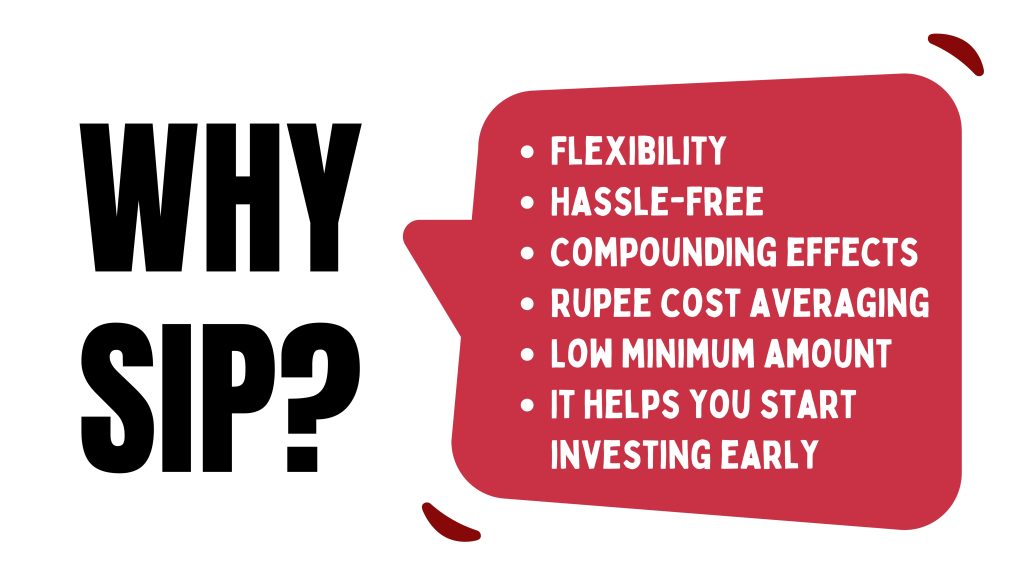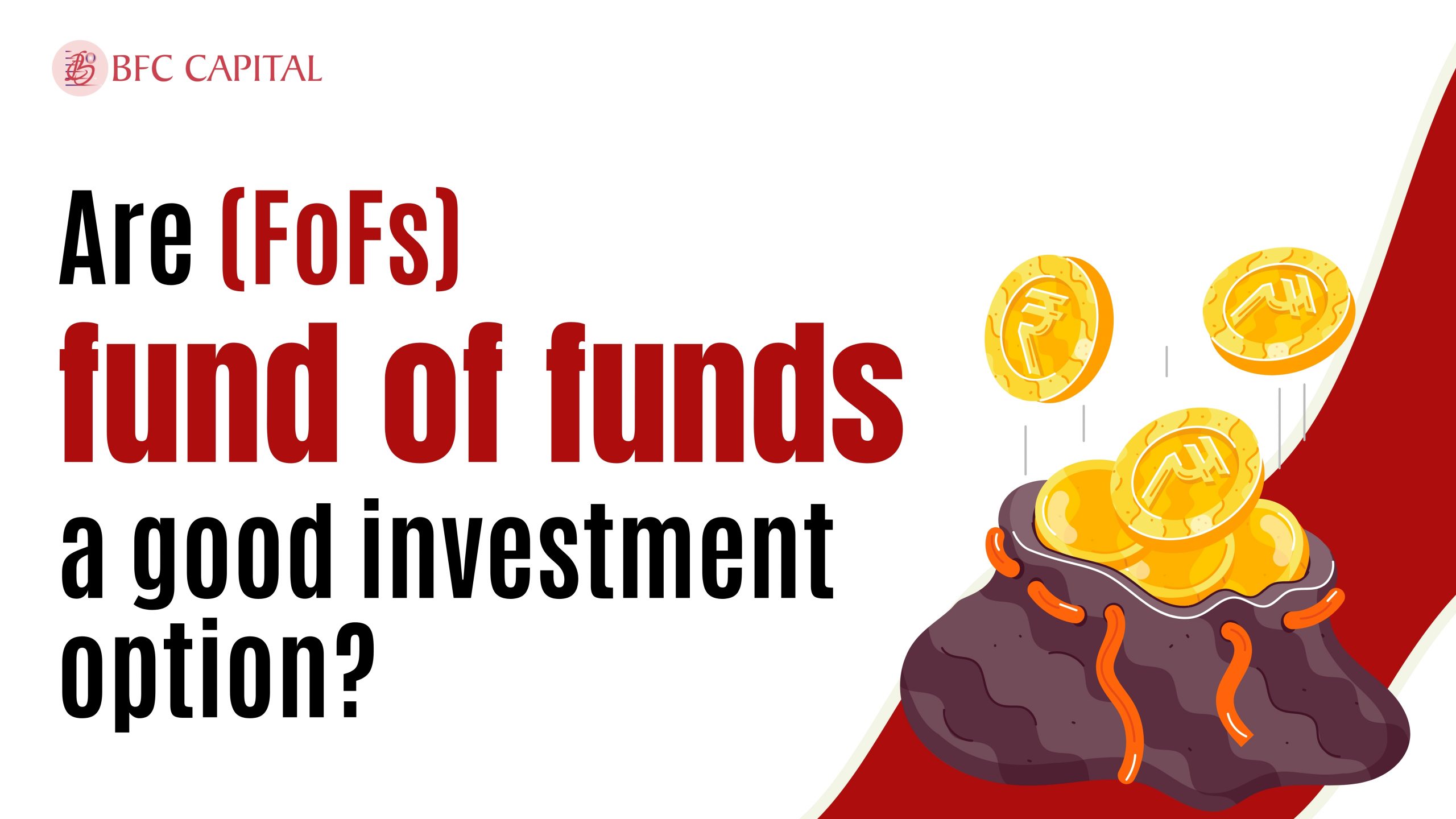
Investment is a deep term when understood by the investor properly. The term doesn’t involve investing money into different investment plans; proper knowledge of each investment scheme, its ups and downs, and its market performance is also essential. Hence, an appropriate check of background and future actions should be well-accounted for before investing in any scheme. Therefore, discussing with your financial advisor before investing in any investment scheme is always advised. SIP is one such scheme that can help you start early and get profitable returns over time.
Table of Contents
Delving into SIP
Also known as a Systematic Investment Plan, SIP is a form of investment where you invest the amount in a particular mutual fund scheme at fixed intervals. The scheme doesn’t involve investing the whole chunk of the amount in one go. Hence, it becomes comfortable for you to manage your expenses and investments. Such an investment can also be termed a disciplined approach that helps you reap the fruits of your investments in the long run. The intervals set to invest the money can be weekly, monthly, or quarterly. The investment plan allows the investors to participate in the market, be a part of it, and manage the risk!
Mentioned above is an example displaying of how an SIP works
How does this Chakra work?
Eye-grabbing things always make us all and are always curious about their work. A similar scenario for SIP’s working. Investing in SIP leads to auto-debit of the amount you decide in the mutual funds of your choice. After the amount is debited, the investor gets a certain number of units of the mutual fund scheme as per the net asset value (NAV). Additional units of SIP mutual funds are allocated with every installment. The NAV keeps changing every day with the same SIP amount invested. Hence, some days, you may get more units, while others, you may get less, as per the market’s performance.
SIP allows the investor to invest the returns from the principal amount and experience the power of compounding. Hence, people prefer SIP, which allows the investor to receive returns only over the principal amount. The compounding effect of investing in SIP mutual funds enables you to grow your money faster over a long period.
Why should you invest in SIP?

There are different types of mutual fund schemes for investment as per every individual’s requirement. Each scheme has its importance along with its right share of downfalls. Let us have a look at some of the advantageous points of investing in SIP:
Easy Management – SIP allows the investor to manage investment and spending equally. Hence, the investor can keep track of the expenditure and investment without any burden. It doesn’t involve investing a lump sum amount one single time, can disturb one’s financial planning, and is also not everyone’s cup of tea. The investment plan is easygoing and makes you a disciplined investor as the amount is auto-debit from your account and is invested in the mutual funds of your choice.
Rupee Cost Averaging – This is one of the other highlighted advantages of SIP investment. ‘rupee cost averaging’ means the daily changing NAV depicting the market’s performance. SIP allows the investor to buy more units when the market is low and fewer units when the market is on sky-high days. This purchasing game keeps changing, but the investment remains the same; that’s the biggest USP of SIP.
| MONTH | INVESTMENT AMOUNT | PRESENT VALUE | UNITS ALLOCATED | TOTAL UNITS IN PORTFOLIO |
| 1 | Rs. 10000 | Rs. 80 | 125 | 125 |
| 2 | Rs. 10000 | Rs. 85 | 118 | 243 |
| 3 | Rs. 10000 | Rs. 75 | 133 | 376 |
| 4 | Rs. 10000 | Rs. 90 | 111 | 487 |
Let us understand this financial terminology with an example, based on the above table –
An investor decides to invest Rs. 10,000 a month in a mutual fund of his choice through SIP.
- The NAV is Rs. 80 (present value) in the first month, so he get 125 units of it.
- In the second month, the NAV is Rs. 85, so Rs. 10,000 allows him to buy 118 units.
- In the third month NAV falls to Rs. 75 and in this case he gets 133 units
- Now when the NAV rises to Rs. 90, the Rs. 10,000 invested allows him to buy 111 units.
The example explains that Rs. 40,000 was invested in the period of 4 months, which allowed him to buy 487 units of the mutual fund with an average NAV is 82.13.
The Compounding Factor– Compounding may seem confusing for some, but it is equally beneficial and attractive when understood well! SIP allows the investor to invest their returns again and enjoy the fruits of their regular investment. Compounding will enable investors to turn their investment into a massive corpus with time and quickly turn their dreams into reality! By filling out a simple form of SIP, you can choose the debit option from auto-debit or post-dated cheques.
Let us understand the power of compounding with a simple example:
For Example, if an individual invests Rs. 50,000 with an annual interest rate of 10% for five years, then:
- The returns for the first year will be Rs. 5000 (50,000×10/100)
- The returns for the second year will be Rs. 5550 (50,000+5,000)
- The returns for the third year will be Rs. 6,055, and the process keeps on going in the same pattern.
Case Study
Here’s an analogy explaining why you should stay invested for long term. Let’s consider that a person wanted to invest in a Large cap fund, HDFC Top 100 (Growth). And started an SIP of Rs. 10,000 per month.
Name of Fund: HDFC Top 100 Fund
Category: Equity: Large Cap
Installment Amount: Rs. 10,000
Frequency: Monthly Start Date: 01-01-1997
Case I: Market Fluctuations

The table above shows the NAV data for the HDFC Top 100 Fund, since its inception, corresponding to the respective date. However, there’s an interesting contrast between two specific data. On 2nd Feb. 1998, the invested amount in the Fund is higher than the Market Value.
As market value of investment in 1998 is below than the invested amount hence as an any investor must be thinking about the exting from the market.
If the person panics and redeems all the units at market price, the person is bound to book a loss. However, if the person stays invested and keeps investing Rs. 10,000 every month for another year or two, on 3rd Jan 2000, the market value is almost double the invested value.
Pro Tip: In case of a market fluctuation, it is obvious to think of exiting the market. However, trusting the process, being patient, and believing in long-term investment power can help one reap the fruits of investment in the future.
Case II: 2008 Market Crash — Global Financial Crisis
Anyone who is even meagerly associated with the investing world has either heard or seen the catastrophe of the 2008 Global Financial Crisis.

The data above has something interesting to offer. Consider three dates, 1st Jan 2008, 1st Dec 2008 and 1st Dec 2009. Between 1st Jan 2008 and 1st Dec 2008 we can see that the market value of the Fund went down from Rs. 1,05,89,073 to Rs. 53,38,086. That is a hefty 50% drop in the market value. Imagine losing half of your net worth in a short span of time. Spine-chilling events like these leave investors traumatised.
However, post January 2009, markets started improving. Between 1st Dec. 2008 and 1st Dec 2009 market value jumped a whopping 115% from Rs. 53,38,086 to Rs. 1,14,70,913. That is even higher than the pre-2008 levels. As Shelby M.C. Davis once said, “Invest for the long haul. Don’t get too greedy and don’t get too scared”.
Pro Tip: Situations like the 2008 financial crisis are once-a-decade phenomena. Even in such situations, the one who stayed calm, had patience and kept investing, went ahead and regained all the wealth that once seemed lost.
Case III: 2020 COVID-19 Pandemic

01-01-2020 to 01-04-2020 = 34% market value drop
01-04-2020 to 01-01-2021 = 61% market value up
The first two highlighted points depict a dip of 34% in the market value, which further levels up to 61%, which is reflected in the third highlighted point. Again, in such situations, a dip of half of the amount might make an investor feel the need to withdraw the investment and invest in some other options. But again, in the third situation, we can see a spike in the market value, which allows an investor to recover the amount that seems to be lost once.
Situations like pandemics happen once in a century, which leads to market fluctuations, which is a normal fact. However, an investor should keep patience and allow the market to recover the amount along with profits.
Pro tip: The above case makes an investor understand the market’s theory of falling and rising due to certain situations. The market may dip and increase due to certain situations, which is a common phenomenon of the market. However, an investor should keep calm and trust the market’s healing process to allow the investor to recover the lost amount.
Conclusion of Case Studies
All the case studies reflect one common point: an investor should be patient and calm while investing in the market. Certain situations may disturb the balance of the invested amount, but soon, the long-term investment will reap profitable fruits. Hence, it is clear that long-term investments are better and more profitable compared to short-term investments; you need to trust the whole process.
Types of SIP
- Fixed SIP- One of the highly-adopted forms, fixed SIP, involves a fixed amount decided by the investor to invest at regular intervals decided by the investor as well. It helps the investor stay consistent and leaves no gap for excuses for skipping even a single installment.
- Flexible SIP– In this type of SIP, investors have the privilege of being flexible with their investment amount for each installment. This type of SIP is ideal for investors with financial restrictions who need to change the investment amount per their budget.
- Perpetual SIP– This is a type of SIP where no fixed end date for the scheme is pre-planned. The investor can continue the scheme as per his wish and financial stability.
- Top-Up SIP– This form allows the investor to increase the investment amount periodically, helping the investor’s investment rise over time.
- Step-Up SIP– The financial scheme allows the investor to increase their investment amount regularly as per their economic situation and allows the investor to experience enhanced savings.
Conclusion
SIP mutual funds are a form of wealth creation over time due to their investment patterns at regular intervals. The investment plan helps the investor stay consistent with the investment and reap the fruits of it in the future. Consistent in this scheme helps the investor make a huge corpus with the decided amount over time and allows one also to experience the joy of multiplying the investment with the help of the compounding factor. Hence, beginning a SIP plan early in your life stage can help you stay strong in the future and achieve all those planned goals without any financial restrictions.
Call to Action
To learn more about mutual funds, contact us via Phone, WhatsApp, Email, or visit our Website. Additionally, you can download the Prodigy Pro app to start investing today!
Disclaimer – This article is for educational purposes only and by no means intends to substitute expert guidance. Mutual fund investments are subject to market risks. Please read all scheme-related documents carefully before investing.

Assistant Vice President – Research & Analysis
Akash Gupta heads the Research & Analysis department at BFC CAPITAL, where he combines in-depth market insights with strategic analysis. He holds multiple certifications, including:
- NISM-Series-XIII: Common Derivatives Certification
- NISM-Series-VIII: Equity Derivatives Certification
- NISM-Series-XXI-A: Portfolio Management Services Certification
- IRDAI Certification
With his expertise in equity, derivatives, and portfolio management, Akash plays a key role in providing research-backed strategies and actionable insights to help clients navigate the investment landscape.







